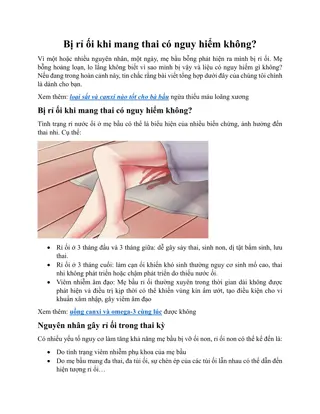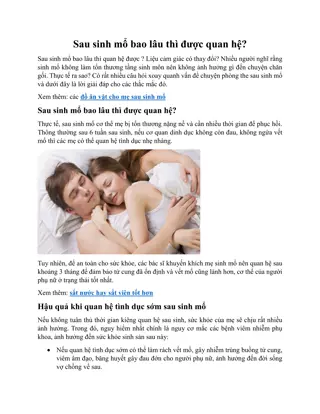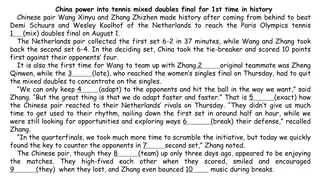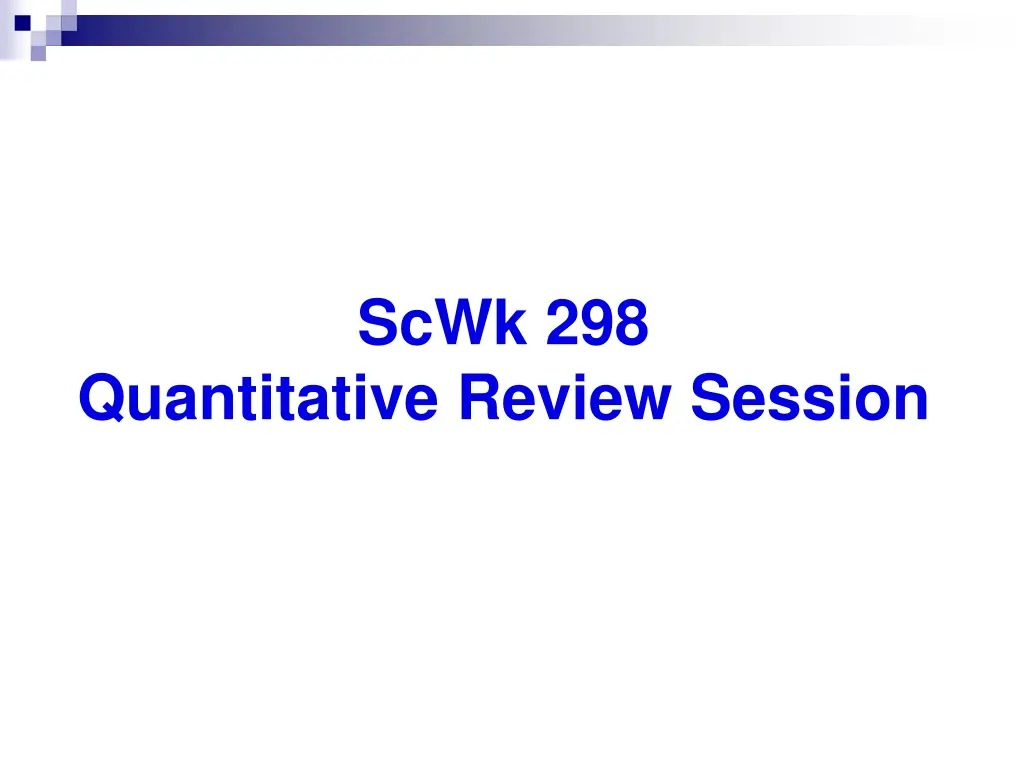
Understanding Variables and Descriptive Statistics
Explore the types of variables - categorical and continuous, along with examples like visits to a shelter, satisfaction scales, and more. Learn about descriptive statistics for both categorical and continuous variables, including frequencies, percentages, means, medians, standard deviations, and ranges. Understand the differences between percent, valid percent, and cumulative percent. Enhance your knowledge of data analysis with this informative content.
Download Presentation

Please find below an Image/Link to download the presentation.
The content on the website is provided AS IS for your information and personal use only. It may not be sold, licensed, or shared on other websites without obtaining consent from the author. If you encounter any issues during the download, it is possible that the publisher has removed the file from their server.
You are allowed to download the files provided on this website for personal or commercial use, subject to the condition that they are used lawfully. All files are the property of their respective owners.
The content on the website is provided AS IS for your information and personal use only. It may not be sold, licensed, or shared on other websites without obtaining consent from the author.
E N D
Presentation Transcript
ScWk 298 Quantitative Review Session
Types of Variables Categorical variables: Nominal: categories with no ranking (e.g. gender, race/ethnicity, place of birth, etc.) Ordinal: categories with a ranking (e.g. educational level, income categories, Likert scales (strongly agree, agree, disagree, strongly disagree) etc.) Continuous variables: Azero point and equal distance between values (e.g. age, height, weight, # of hours studying a day, etc.).
What kind of variable is it? The number of visits to a homeless shelter ________ How satisfied are you on a scale of 1 (Very satisfied) to 5 (Very dissatisfied)? _______ Have you ever had training in Cognitive Behavioral Therapy? (Yes/No)? ____ Student s GPA _____
Descriptive Statistics: Categorical Variables Frequencies and percentages are used with categorical variables Frequency: a count Percentage: a proportion of the total
Child.Gender Cumulative Percent Frequency Percent Valid Percent Valid F 1955 48.8 50.6 50.6 M 1909 47.6 49.4 100.0 Total 3864 96.4 100.0 Missing X 146 3.6 Total 4010 100.0 What s the difference between Percent, Valid Percent and Cumulative Percent? Which one should you report?
Descriptive Statistics: Continuous Variables Means, medians, standard deviations, and ranges are used with continuous variables Mean: average (add all values and divide by total number of values) Median: when all of the values are put in order from lowest to highest, the median is the middle number *Use median instead of mean when there are outliers (extreme high or low values)
Descriptive Statistics: Continuous Variables Standard deviation: A number that reflects how much variation there is from the average value in the dataset. A large SD indicates a lot of values that are different from the mean. A small SD means there are not a lot of values that are different from the mean. Range: The highest value in the dataset minus the smallest value in the dataset
Descriptive Statistics Maximu m 215.00 88.1387 Std. Deviation 58.30834 N 4010 Minimum Mean child age in months .00 Valid N (listwise) 4010
Testing Hypotheses Bivariate statistics test the strength of the relationship between TWO variables. Chi-Square test examines the relationship between a categorical independent variable and a categorical dependent variable
Chi-Square Example Research Scenario Quasi-experimental group research design examining employment outcomes among participants in a vocational training program compared to those on a waiting list (comparison group). Independent Variable: Vocational Training Program vs. waiting list Dependent Variable: Employment outcomes
Chi-Square SPSS Results Program.Participation * Employment Crosstabulation Employment None Part-Time Full-Time Total Program.Participation Intervention Group Count % within Program. Participation Count % within Program. Participation Count % within Program. Participation 5 7 18 30 16.7% 23.3% 60.0% 100.0% Comparison Group 16 7 6 29 55.2% 24.1% 20.7% 100.0% Total 21 14 24 59 35.6% 23.7% 40.7% 100.0% Chi-Square Tests This is APA format for reporting Chi-Square results: X2 = (2, N = 59) = 11.748, p = .003 Asymp. Sig. (2-sided) Value df 11.748a 12.321 Pearson Chi-Square Likelihood Ratio Linear-by-Linear Association N of Valid Cases a. 2 2 .003 .002 11.548 1 .001 59 0 cells (.0%) have expected count less than 5. The minimum expected count is 6.88.
Dependent Samples T Test Used with a categorical independent variable and a continuous dependent variable Compares Pre-test data to Post-test data
Dependent Samples T-test: Pre-test and Post-tests Research Scenario Quasi-experimental pre-test post-test design examining changes in client work skills after participation in a vocational training program Independent Variable is the vocational training program (pre-test vs. post-test) Dependent Variable is a score on an assessment of work skills
Dependent T-test SPSS Results Paired Samples Statistics This is APA format for reporting Dependent T-test results: Std. Error Mean Mean N Std. Deviation Pair 1 Pre-Test Work Skills Score Post-Test Work Skills Score 12.7250 40 4.65192 .73553 17.5750 40 6.53546 1.03335 t(39) = - 7.462, p < .001 Paired Samples Test Paired Differences 95% Confidence Interval of the Difference Std. Error Mean Mean Std. Deviation Lower Upper t df Sig. (2-tailed) Pair 1 Pre-Test Work Skills Score - Post-Test Work Skills Score -4.85000 4.11096 .65000 -6.16475 -3.53525 -7.462 39 .000
Independent Samples T Test Used with a categorical independent variable and a continuous dependent variable Compares data between 2 different groups
Independent Samples T-test Research Scenario Quasi-experimental group research design examining differences in the number of emergency psychiatric hospitalizations experienced by mental health clients who are either in 1) individualized medication support program versus, 2) a group medication support program. Independent Variable is the type of medication support program (individualized vs. group) Dependent variable is the number of emergency psychiatric hospitalizations
Independent Samples T-test SPSS Results This is APA format for reporting Independent T- test Results Group Statistics Type of Medication Support: Group or Ind. Group Medication Support Individualized Medication Support Std. Error Mean N Mean Std. Deviation Number of Emergency Psychiatric Hospitalizations 19 10.8947 3.51022 .80530 19 8.1579 3.74556 .85929 t(36) = 2.324, p = .026 Independent Samples Test Levene's Test for Equality of Variances t-test for Equality of Means 95% Confidence Interval of the Difference Mean Difference Std. Error Difference F Sig. t df Sig. (2-tailed) Lower Upper Number of Emergency Psychiatric Hospitalizations Equal variances assumed Equal variances not assumed .019 .891 2.324 36 .026 2.73684 1.17766 .34843 5.12525 2.324 35.849 .026 2.73684 1.17766 .34808 5.12560
Correlation Used with a continuous independent variable and a continuous dependent variable Tests the strength of the association between the 2 variables
Correlation Research Scenario A cross-sectional survey study is examining the possible association between employee stress levels and the number of clients they have on their caseload. Independent variable is number of clients Dependent variable is score on a stress survey
Correlation SPSS Results Correlations Number of clients on caseload Employee stress level Number of clients on caseload Pearson Correlation Sig. (2-tailed) N Pearson Correlation Sig. (2-tailed) N 1 .821** .000 40 40 Employee stress level .821** .000 40 1 40 **. Correlation is significant at the 0.01 level (2-tailed). This is APA format for reporting correlation results r (40) = .821, p < .001
Other tests ANOVA: One categorical independent variable (with 3 or more categories) and one continuous dependent variable Multivariate statistics allow you to determine the impact of an independent variable on a dependent variable while factoring out the influence of potentially confounding (i.e. extraneous) variables. Logistic regression is for a categorical dependent variable and multiple linear regression is for a continuous dependent variable
SPSS Resources Research Sequence website has self- guided SPSS labs with answer keys: http://www.sjsu.edu/socialwork/courses/Res earch/ UCLA SPSS website (LOTS of examples with detailed instructions): http://www.ats.ucla.edu/stat/spss/


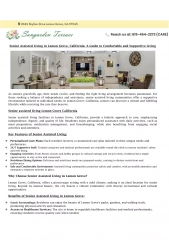

![[✔PDF✔⚡] Renal Diet Cookbook for the Newly Diagnosed: The Complete Guide to](/thumb/68079/pdf-renal-diet-cookbook-for-the-newly-diagnosed-the-complete-guide-to.jpg)




